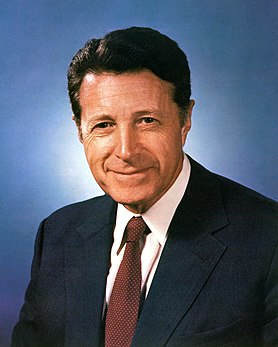The California Commission on Judicial Appointments is a body of the government of California established in its current form in 1979 that is responsible for reviewing and confirming justices appointed by the Governor of California to the Supreme Court of California and judges appointed by the Governor to the California Courts of Appeal. [1] The commission consists of the Chief Justice, the Attorney General of California, and the state's senior presiding justice of the California Courts of Appeal. [2] The senior Associate Justice fills the Chief Justice's spot on the commission when a new Chief Justice is nominated.

The government of California is the governmental structure of the state of California as established by the California Constitution. It is composed of three branches: the executive, consisting of the Governor of California and the other constitutionally elected and appointed officers and offices; the legislative, consisting of the California State Legislature, which includes the Assembly and the Senate; and the judicial, consisting of the Supreme Court of California and lower courts. There is also local government, consisting of counties, cities, special districts, and school districts, as well as government entities and offices that operate independently on a constitutional, statutory, or common law basis. The state also allows direct participation of the electorate by initiative, referendum, recall and ratification.

The Governor of California is the head of government of the U.S. state of California. The California Governor is the chief executive of the state government and the commander-in-chief of the California National Guard and the California State Military Reserve.

The Supreme Court of California is the highest and final court in the courts of the State of California. It resides inside the Earl Warren Building in San Francisco, overlooking Civic Center Square along with City Hall. It also holds sessions in Los Angeles and Sacramento. Its decisions are binding on all other California state courts.
The Commission initially continued the evaluative role of its predecessor, the California Commission on Judicial Qualifications, and was first proposed for that purpose through a ballot proposition in the election of November 1960. [3] In 1961, California Assemblyman John A. Busterud proposed to expand the power of the Commission to require its approval for the Governor to appoint judges, [4] which was endorsed by Caspar Weinberger. [5] A bill to that effect was introduced in 1963. [6]
John A. Busterud was an Assemblyman in the California legislature for the 22nd District. During World War II he served in the United States Army. He became a Lieutenant Colonel. He was also Chair of the Council on Environmental Quality, was married to Anne Witwer and had three children: John, James and Mary. He is the author of "Below The Salt," an account of the 90th Infantry Division and its capture of the German gold reserves at Merkers Mine in World War II.

Caspar Willard "Cap" Weinberger was an American politician and businessman. As a prominent Republican, he served in a variety of state and federal positions for three decades, including Chairman of the California Republican Party, 1962–68. Most notably he was Secretary of Defense under President Ronald Reagan from 1981 to 1987.
The Commission has been criticized by various groups since shortly after its creation. [7] A 2012 study of court appointment systems found that the existence of the Commission increased the chances that a California governor would appoint justices with a different party affiliation from their own. [8]






